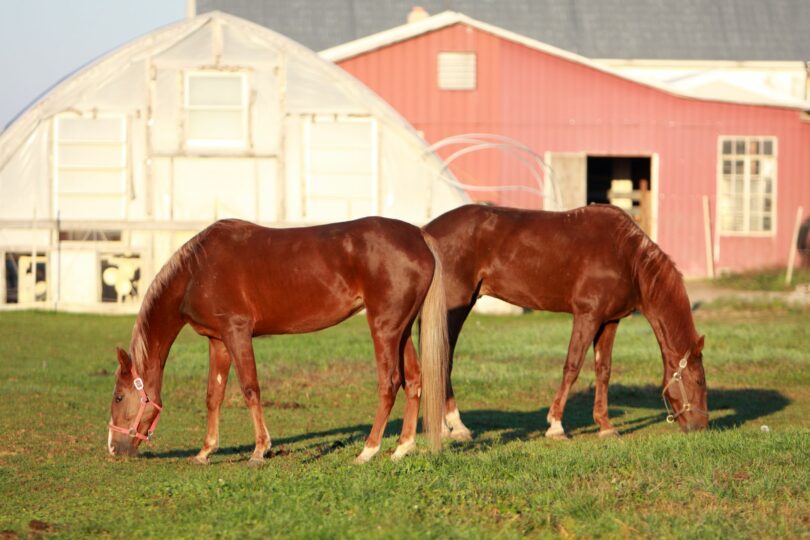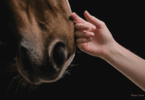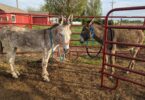Turn That Buddy Sour Horse Sweet
For horses, there’s safety in numbers, so it makes sense that horses are more comfortable hanging out with their friends rather than going it alone. This is what happens with the buddy sour horse.
Each time you try to separate him from his buddy, his behavior changes from sweet to sour. Nothing you say or do seems to ease his anxiety—he’s just not listening. Trying to exercise a buddy sour horse can be extremely frustrating, and potentially dangerous, if his efforts to return to his friend lead him to spin and bolt.
A buddy sour horse reacts poorly when separated from its companion(s). The pair gives each other confidence and reassurance, and being separated causes their anxieties to skyrocket.
To solve these problems, you need to instill in your horse the same quiet confidence that their buddy does. Show leadership and empathy, and your buddy sour horse will soon overcome his anxiety and gain the confidence needed to strike out alone.
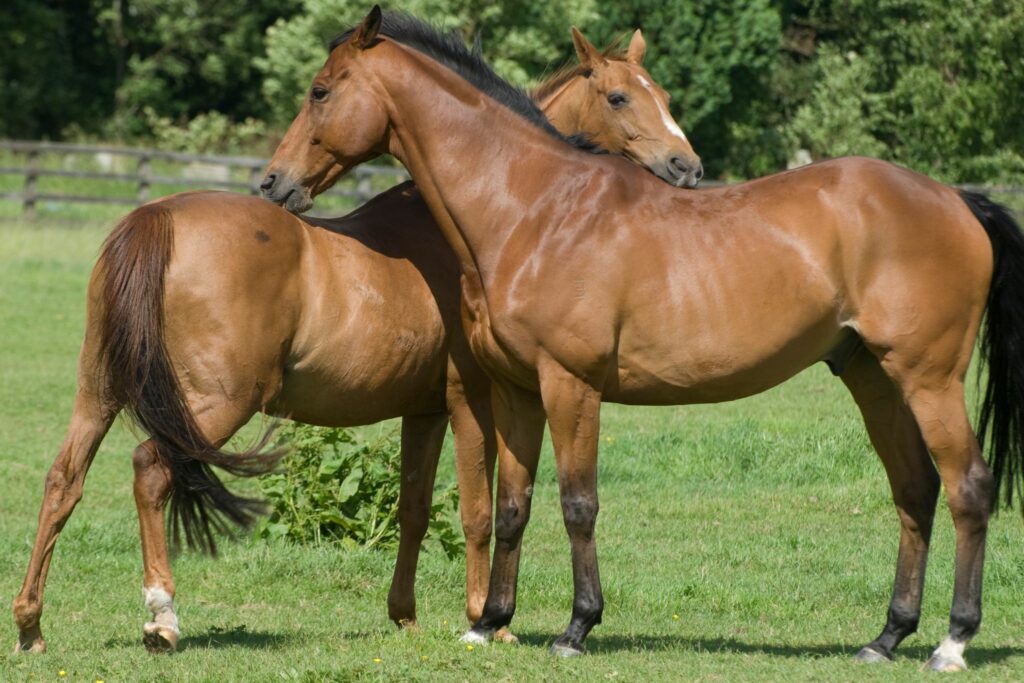
Source: Canva
Sour Horses Defined
Horses become ‘sour’ for various reasons, some of which may be physical while others are psychological. There are various types of sour horses:
- Buddy Sour – A buddy sour horse finds the presence of another horse reassuring and experiences separation anxiety whenever he has to leave his buddy’s side. Often, the bond is mutual, and both horses in the couple will become buddy sour.
- Barn Sour – A barn sour horse may be unwilling to leave his herd or may simply prefer the comfort of the barn, where there’s plenty of food and no pressure on him to perform.
- Ring Sour – Ring-sour horses will refuse to enter a ring or arena usually because they associate it with a negative experience. Some ring-sour horses are simply bored, while others are seeking to avoid hard work. Physical pain can also make a horse ring sour.
The Psychology of the Buddy Sour Horse
In the buddy sour horse’s mind, life in the herd is much safer and more enjoyable than it is with just a human.
They associate their owner with work and their companion with comfort and relaxation, so it makes sense that they’d rather be hanging with their friends than facing potential dangers, and hard work, while alone.
Herd Mentality
Horses are herd animals that, in the wild, rely on the company of others for their protection. Being prey animals, they seek safety in numbers knowing that leaving the herd will make them a target for any nearby predators—whether real of imagined.
It’s understandable that horses experience fear and anxiety when asked to operate independently of others.

Source: Canva
Behaviors of the Buddy Sour Horse
The buddy sour horse may refuse to leave their friend, digging in its heels (literally and figuratively) and freezing in position.
If you keep pressuring the horse to move, his anxiety may intensify, causing his behavior to become increasingly unmanageable and dangerous.
Buddy sour horses express their anxiety through:
- Vocalization
- Lack of attention
- Pacing
- Weaving
- Rearing
- Spinning
- Striking
- Bolting
How to Retrain a Buddy Sour Horse
You can retrain a buddy sour horse, but it won’t happen overnight.
It takes time, repetition, and patience to teach such a horse that life without its buddy is not only bearable, but also enjoyable.
There are several ways to approach the problem, but all involve separating your horse from its buddy gradually.
You can do this using both time and distance. Gradually increase the distance between your horse and its buddy, and do this for slightly longer periods each time.
To begin with, ask your horse to spend a couple of minutes away from his buddy. Separate them, but keep them within eyesight of each other–for example, maybe they are only 100 feet apart.
When you allow your horse to return to his buddy’s side, make that experience uncomfortable by making him work. After about 10 to 15 minutes, take your horse away from his buddy again and allow him to rest. While he’s away, give him a loose rein and a reassuring pat to make the experience as pleasant as possible.
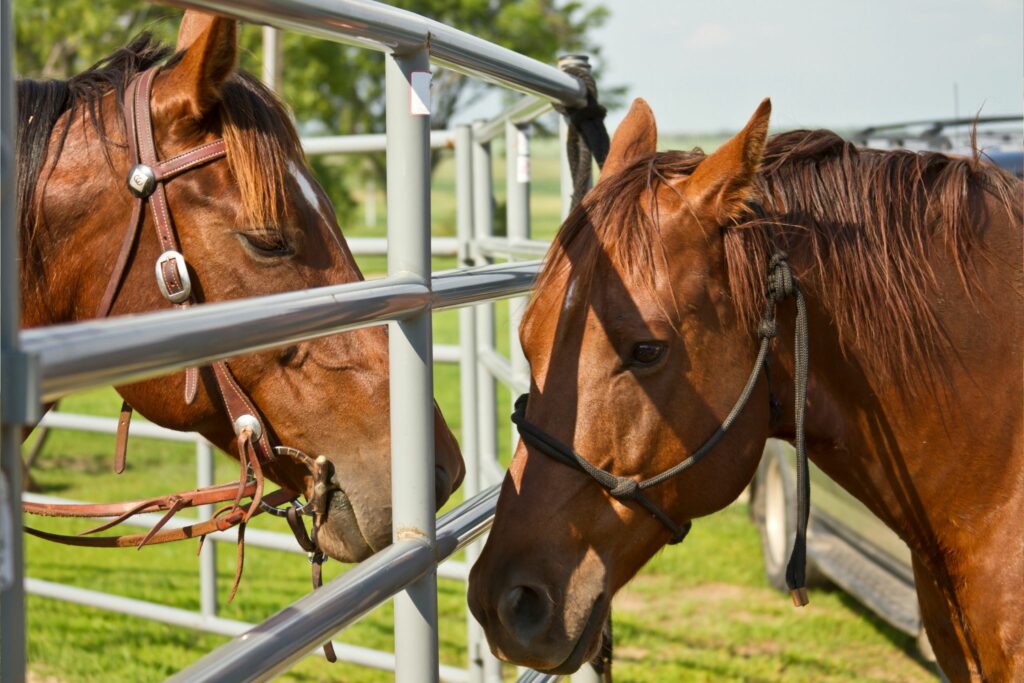
Source: Canva
Build Trust, Establish Leadership
The reason a buddy sour horse wants to stay with his companion is that it makes him feel safe. A buddy sour horse’s vocalizations are calls for help because he’s frightened, and you need to respond accordingly.
Becoming anxious or aggressive will only make the situation worse, so the key is to remain calm and establish yourself in the role of a confident leader.
The more a horse trusts you, the more confident he’ll feel in your company, helping to reduce the anxiety he feels at being separated from his buddy.
Patience
Don’t expect your horse’s behavior to improve overnight.
It takes time and patience to retrain a buddy sour horse, and should be done in small steps. Keep your training sessions brief but frequent, repeating the same routine each time to give your horse confidence and help his buddy adjust.
Repetition
Every time your horse leaves its buddy and returns safely, it reassures both him and his buddy. They start to realize that they will be reunited soon, so the separation anxiety is diminished.
Reverse Psychology
For most horses, being with their buddies means relaxing and enjoying life, while being separated from them means work and pressure.
To change your horse’s mindset, you need to change those experiences by making him work harder when he’s close to his friends and taking the pressure off when he’s separated.
Additional Training Tips for the Buddy Sour Horse
One of the biggest issues with a buddy sour horse is the lack of attention.
He’s so busy worrying about his friends that he’s unable to concentrate on or respond to the information you’re giving him. To overcome this problem, you need to get him to engage his thinking brain and overcome his instinctive reaction.
Keep their Feet Moving
Asking your horse to move away from pressure gives you control over his movements, making you the leader. The horse needs to engage his logical thinking brain to respond to your cues and stop listening to his instinctive or reactive side.
You can win your horse’s trust by asking for small movements backward, forwards, and sideways and rewarding every attempt.
As your horse learns to trust you, he will start to feel more comfortable in your company and less concerned about his buddy.
Rest is the Reward
Rather than asking your horse to leave his buddy so you can ride him hard in the arena, make your horse work when he’s near his buddy, and reward him with rest when you move him away.
This reverse psychology creates a scenario in which the horse is more comfortable away from his buddy than he is with him.
Separate for Feeding
It takes time and repetition to get a buddy sour horse to feel comfortable alone, so it needs to be done as part of your daily routine.
Feeding a buddy sour horse away from his companion is one of the easiest ways to get them both used to the separation. Most horses love eating, so will start to associate the separation with something positive.
Make Changes Gradually
A buddy sour horse isn’t acting up—he’s genuinely distressed at being separated from his buddy, so suddenly separating him for hours will cause him extreme stress.
A better approach is to separate him for just a few minutes each day, gradually increasing the duration and distance as your horse adapts. You need to give him time to realize that he’s perfectly safe alone and that his friend will be waiting for him when he returns.
Some horses might catch on quite quickly, while it may take longer to build up the confidence of others.
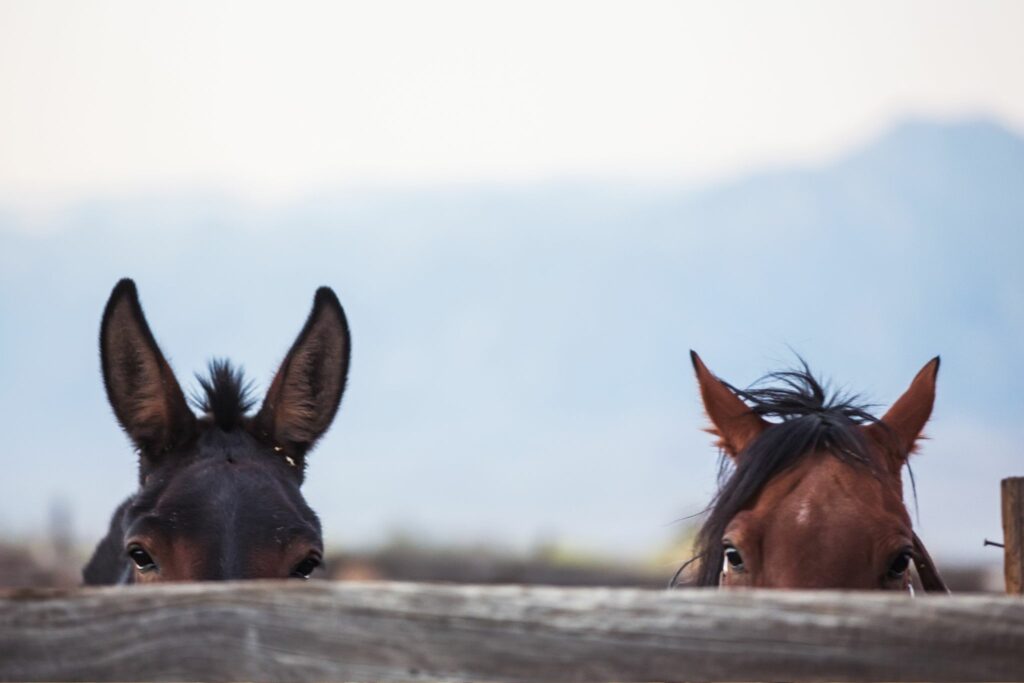
Source: Canva
Do’s & Don’ts While Training Buddy Sour Horses
Although there are different methods of training a buddy sour horse, there are a few rules that apply to them all, including:
Do:
- Be positive and assertive
- Reassure your horse
- Ask the horse for movements he knows
- Take your time
- Make small changes
Don’t
- Act aggressively
- Allow yourself to get nervous
- Try to train something new
- Assume you can retrain this behavior in one session
- Take your horse away for hours on the first day
Frequently Asked Questions
Q: Do horses get separation anxiety?
Horses experience separation anxiety when they can no longer see or touch their closest companion. Horses form strong bonds, especially in small herds. You’re most likely to experience buddy sour horses when you have just two sharing a paddock.
Q: Should I separate buddy sour horses?
The best way to separate buddy sour horses is to have one person handling each horse.
When the horses come together, make them work and keep their feet moving. When it’s time for a rest, move the horses a short distance away and allow them to relax for a few minutes.
Increase the distance and duration incrementally each day, and the horses will soon realize that they can survive and even enjoy some time apart.
Q: What do you do if your horse is barn sour?
A barn sour horse is one that refuses to leave the barn or yard, most commonly because it would prefer to relax at home than perform a series of grueling training exercises. Horses that only ever leave the barn to work are liable to become barn sour, either out of boredom or laziness.
One of the best ways of dealing with this is to make your horse associate the barn with work and the outside world with pleasure.
Make your horse work in the yard, performing small circles or figures of eight, and then ask him to leave the yard.
Once out, give him a loose rein and lots of praise.
You can also change your training routine to make it more interesting and pleasurable. If your horse enjoys trail rides, then head out on the trail. If he’s used to jumping every day, introduce some
When you return to the yard after your training session, ask your horse to perform a few more movements, even if they’re just simple ones, before ending the session, that way he’ll stop associating the barn with relaxation.
Q: How do you treat an arena sour horse?
Arena sour horses are often in physical pain, so it’s critical you rule that out before you start trying to correct the behavior. Horses also get arena sour when they’re overexposed to the same training sessions day after day. In other words, they’re bored and need a bit of variety in their lives.
Introduce some cavaletti work, go for a trail ride, or try some dressage. Cross-training is great for your horse physically as well as mentally.
You also can use the same reverse psychology as we applied to buddy sour and barn sour horses. Make your arena sour horse work outside the ring, and then let him rest once he’s entered the arena.
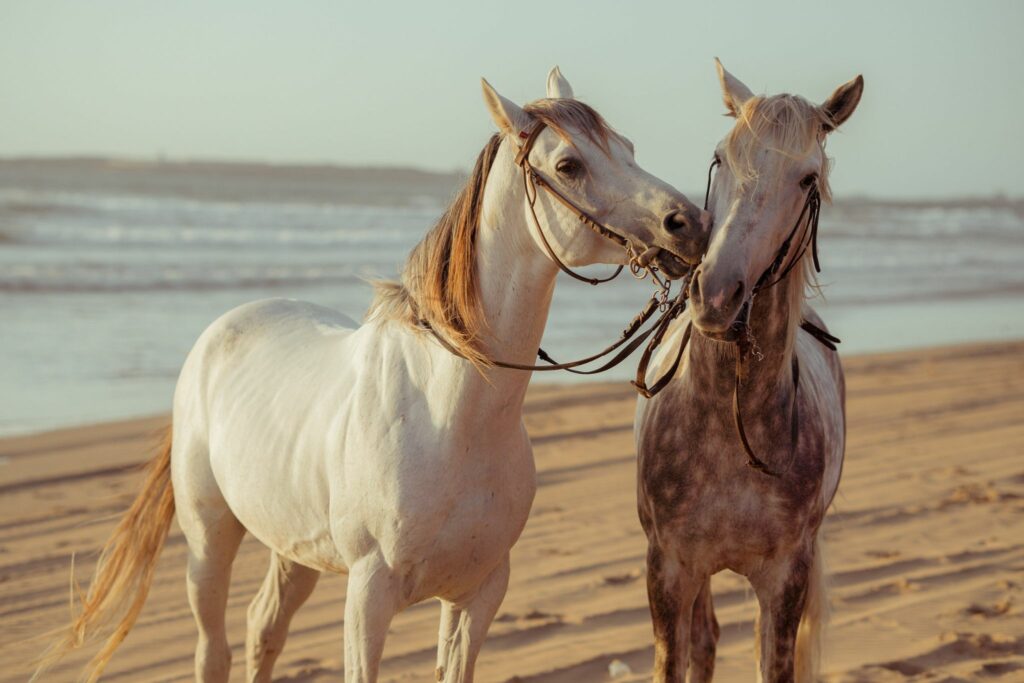
Source: Canva
Parting Thoughts
A buddy sour horse is insecure and needs you to be the leader. If he can trust you and rely on you like he can his best friend, he’ll feel more confident about the two of you heading out together.
It takes time and patience to build that level of trust and to teach the buddy sour horse that he survives without his friend. Short daily sessions are the best way to develop your horse’s confidence and establish a strong bond based on trust.
P.S. Enjoy this article? Trot on over to:
- Horse Lifespan 101 (Life Stages, Teeth, Senior Horse Care)
- Crow Hopping Horses: How to Fix Frisky Behavior
- Claim Your Space: How to Scare a Horse Away (Kindly)
- What to Expect When Your Mare is Expecting
- Speaking Horse: Translating Equine Vocalizations
- Horseback Riding Safety Equipment That’s Worth Every Penny
- 5 Hardy Horse Breeds with the Longest Lifespans
- Understanding (And Dealing With) The Spooky Horse
- Why Some Horse Wear Shoes (And Others Don’t)

